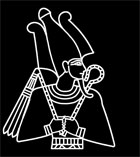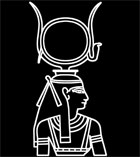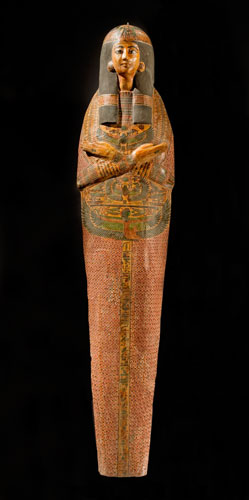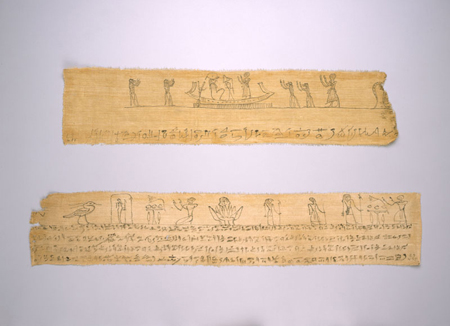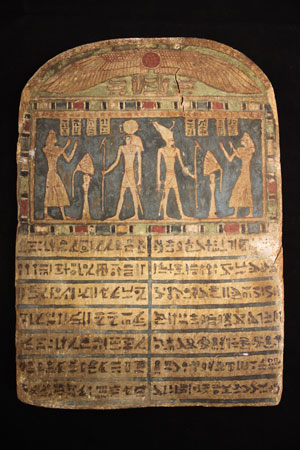Exhibit:
Introduction | Ancient sky-watchers | Celestial deities in the time of the pharaohs | Cosmic connectors | The sun at which one cannot stare | Without the moon, there would be no life | Lunar enlightenment | Cosmic models | Celestial guidance | A universe of possibilities |
Education:
Astronomy in Africa | ArtLAB+ interviews | Star sounds | Cosmos diary (blog) | African Cosmos (Twitter) | Family guide | A Galaxy of Activities | Teacher Lesson Plans | Sons of the Moon DVD
Ancient Egyptian and Nubian religious beliefs and art forms linked major deities with the sun, moon, and earth.
Long ago Egyptians depicted sky deities on scrolls, coffins, vessels, amulets, and religious sculptures. They decorated certain temples with major constellations or celestial deities, including Nut, the sky goddess believed to give birth to the sun at dawn and to swallow it at sunset. In the arts of ancient Egypt, her star-studded body arches as a heavenly vault over the earth god Geb, who is separated by Shu, the god of air and life.
Long ago Egyptians depicted sky deities on scrolls, coffins, vessels, amulets, and religious sculptures. They decorated certain temples with major constellations or celestial deities, including Nut, the sky goddess believed to give birth to the sun at dawn and to swallow it at sunset. In the arts of ancient Egypt, her star-studded body arches as a heavenly vault over the earth god Geb, who is separated by Shu, the god of air and life.
Discover these and other celestial deities in the artworks on view
- Amun-Re, creator and primary sun god
- Neith, mother of Re
- Osiris, funerary deity who received authority from the earth god Geb
- Isis, sister-wife of Osiris and mother of Horus
- Horus, falcon god linked with the sun and moon
- Thoth, lunar deity and creator of writing
- Sopdet, the deification of Sirius, the brightest star in the night sky


